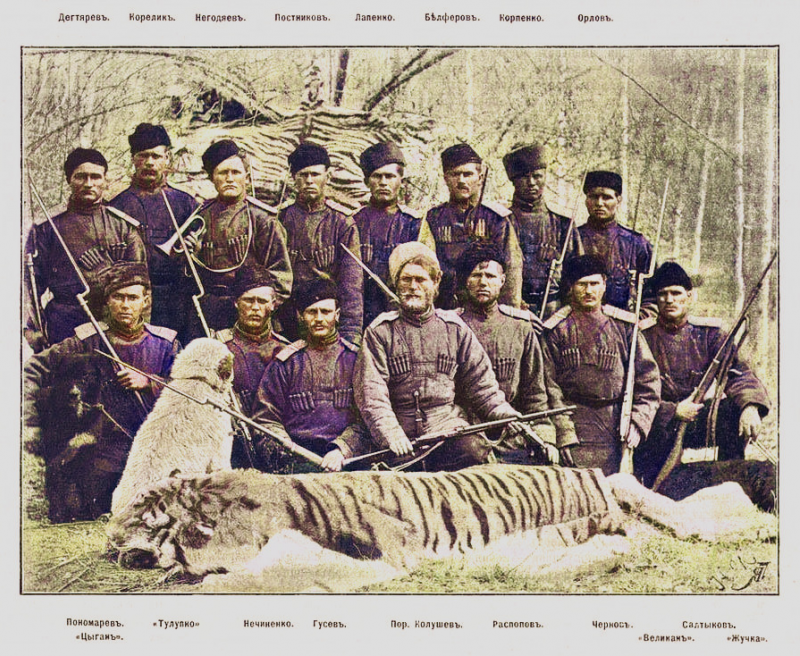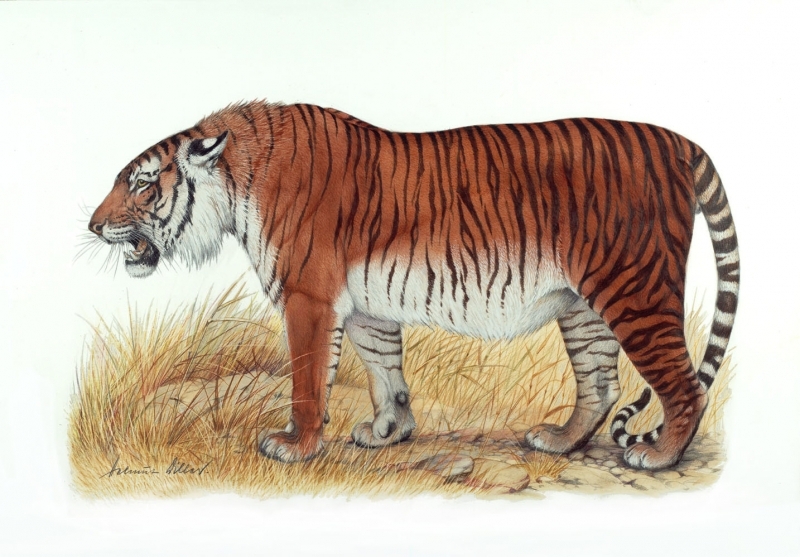Uzbekistan’s lost treasure: Over 60 years since the extinction of the caspian tiger
Review
−
29 July 2024 70599 5 minutes
Today, July 29, is International Tiger Day. Approximately a century ago, 100,000 wild tigers roamed freely across Asia. However, 96% of them have been eradicated, and today only around 4,500 remain in the wild. Some estimates suggest that their numbers might be even lower.
Most Uzbeks are aware of tigers as predators living in distant parts of Asia. In reality, just a hundred years ago, tigers, particularly the unique Caspian (or Turan) tiger, inhabited Uzbekistan. Due to the efforts of the armed forces of Tsarist Russia to exterminate them, the encroachment of human settlements on their habitats, and hunting for their pelts, Caspian tigers were completely wiped out in Uzbekistan. By 2003, the Caspian tiger was declared extinct globally.
Habitat and Distribution of the Caspian Tiger
The Caspian tiger, also known as the Turan or Persian tiger, was found in three Central Asian republics—Uzbekistan, Kazakhstan, and Turkmenistan—as well as in Afghanistan, the Caucasus, and the subtropical forests of Azerbaijan. In Uzbekistan, they lived in regions such as Tashkent, Chirchiq, Syrdarya, Fergana, and Surkhandarya. 130 years ago, Caspian tigers could be encountered in the thickets near modern-day Qoyliq, Chilonzor, and Beshyogoch in Tashkent.
In the early 20th century, genetic research was conducted using 20 tiger bones and tissue samples from museum collections. The results showed a close genetic similarity between the Caspian and Siberian tigers, indicating that the Siberian tiger is the closest living relative of the Caspian tiger. This suggests that their common ancestor migrated from Eastern China to Central Asia around 10,000 years ago, with some later moving to Russia’s Far East to form the Siberian tiger population.
Extinction of the Caspian Tiger
Reports indicate that the local population in Central Asia believed that tigers posed no threat to human life, as the Caspian tiger, being naturally cautious, avoided encounters with people. Hunters recounted that even after living alongside tigers for years, they rarely saw them.
In the late 19th and early 20th centuries, the Tsarist Russian forces, which had conquered Central Asia, played a significant role in the tiger’s extinction. The Russian Empire made extensive efforts to exterminate the predators. On February 27, 1883, the head of the Turkestan Military District ordered the extermination of tigers living between Tashkent and Chinaz. The hunt involved 12 Turkestan battalions. According to the researcher Boris Golendar, a large hunt involving 2,000 people was organized by a local governor in the 1830s to kill a pair of tigers in Bo‘rijar, near Beshyogoch.

A tiger was killed during a hunt in the Amu Darya delta, in 1894.
Under Soviet rule, the last sightings of tigers in Central Asia were recorded in the late 1940s and early 1950s. The last tiger in Georgia was killed near Tbilisi in 1922, and its stuffed skin is preserved in the Georgian National Museum. In Azerbaijan, tigers were seen until the 1960s in the Talish Mountains and the Lankaran region. Between 1950 and 1966, around ten tigers were killed there. Various sources suggest that the last Caspian tiger was shot in southeastern Turkey in 1970.
Unique Characteristics of the Caspian Tiger
The Caspian tiger was notable for its bright fur and thick coat. Male tigers were 2.7-2.9 meters long and weighed 170-240 kg, while females were 2.4-2.6 meters long and weighed 85-135 kg. It was one of the largest feline species, along with the Siberian tiger. The Caspian tiger was also known for its cunning nature compared to other tiger species.

A Caspian tiger at the Berlin Zoo, 1899.
Among the people of Central Asia, many legends and customs were associated with the tiger. Due to its remarkable ability to hide, suddenly appear, and then disappear, the Caspian tiger was considered a divine creature. Some sources mention that tigers were believed to have visited certain graves and circled them three times, just like human pilgrims, before placing their snouts on the threshold of the tomb. The tiger symbolized strength and confidence among the people.
The tiger motif can be seen on carpets, fabrics, and even on the façades of mosques, such as the Sherdor Madrasa in Samarkand’s Registan Square.
Can the Caspian Tiger Be Reintroduced to Uzbekistan?
Eco-journalist Nargis Qosimova notes that ecologists and naturalists worldwide have found that the extinction of this species has had a significant negative impact on the ecosystems of its former habitats. The overpopulation of certain species and the drastic decline of others disrupt the ecological balance. This factor has driven efforts to restore the natural population of the Caspian tiger.
The World Wildlife Fund (WWF) has initiated a project to restore the Caspian tiger population and preserve this unique species. In 2014, efforts began to reintroduce the species, with Kazakhstan chosen as the location for a 15-year project. Experts emphasize that the “tiger habitat” will not interfere with the local population but will instead help improve their living conditions. The return of tigers to neighboring Kazakhstan could potentially create an opportunity to restore this invaluable treasure in Uzbekistan as well.

In Uzbekistan, other rare animals, such as the caracal, lynx, brown bear, snow leopard, and Bukhara deer, are also on the brink of extinction. Currently, fewer than ten caracals, around 350 brown bears, and approximately 200 gazelles remain in Uzbekistan. Unfortunately, there is a lack of public support for animal conservation. For example, the killing of a caracal by a man in the Surkhandarya region, valued at 1 billion soums, sparked widespread outrage. However, every wild animal in Uzbekistan belongs equally to the 37 million population and future generations.
Imagine if Uzbekistan had preserved the Caspian tiger; today, this predator could have been a golden "calling card" attracting foreigners. Perhaps the Caspian tiger would have been recognized as a national symbol of Uzbekistan (similar to the snow leopard in Kyrgyzstan and Kazakhstan, the grey wolf in Turkey, the bald eagle in the USA, and the bear in Russia).
Only by placing wild animals under the protection of the entire nation can they be saved from the threat of extinction.
Live
All


